This post was broken up into two parts because it is a bit long. See last week’s entry for the introduction.
Here are some tips for the BW to ZF swap:
- Set aside several days aside for this project. It should only take a day. Should. If there are no unexpected complications. But you know how life is. There are always unexpected complications. They should be expected. But then other, even more unexpected ones come up. You can’t win. Reading this will make your chances better, but leave extratime anyway. You don’t want to be under your truck with a clamp on floodlight at midnight trying to have it running in time for the job you have the next morning. Trust me on that.
- You don’t need any special tools other than a wide base jack (a transmission jack if you have one ( I used a motorcycle jack I found on Craigslist, because it was both cheaper and more versatile for future projects). Don’t try to use a regular bottle or scissor jack. They are strong enough, but they will probably fall over, and then a transmission will fall on your head.
- What you will want that you won’t necessarily find listed in the shop manual for this process is various crowbars, lengths of pipe, hammers, ratchet straps, and possibly a propane torch. Luckily I happened to have all that stuff lying around already, and I bet you do too.
Crowbars and pipes are for prying parts apart and pressing them together. Hammer gets the universal joint out. Ratchet straps hold exhausts pipes and crossmember dog-ears out of the way, and, if you lay a pipe across the opening in the floor to give something to hook to, you can use a strap to hold up the back of the transmission which lets you alter the angle independently of the jack its on. The torch gets the stick shift off of the shifter stub.
- When you hear it is a “direct bolt-in replacementâ€, they mean it literally: just the bolts. The bolt pattern from the transmission to the engine is the same, so you don’t need an adapter. Pretty much EVERY OTHER PART that goes to or from the transmission are not compatible.
All in all, if wanted to do everything totally properly and by the book, that would mean replacing the clutch, pressure plate, throwout fork, flywheel, driveshaft, crossmember, and floorpan, and possibly the clutch pedal and cylinder. I reused as many parts as I could possibly get away with, which meant I only had to buy one clutch kit and one u-joint, but that still added a couple hundred more dollars to the project than I had originally planned on.
-The Clutch. To the naked eye 10 splines with a 1 1/8″ diameter input shaft (the part of the transmission which goes inside the clutch) looks pretty much identical to 10 splines with a 1 1/4″ input shaft. But when you get the new tranny half in, that small difference in diameter means it isn’t going in, no matter how you angle it. You may have heard (repeatedly, from multiple sources – that it is challenging to get everything lined up perfectly and get the splines to engage. Having heard it was tricky, you might be fooled into thinking that what you are experiencing is normal. You might think it has something to do with not using a real transmission jack, or not having a helper or two, or just not having experience. You might spend all morning trying to get it positioned just right; before finally realizing this can’t be right, going online, and finding out the hole in the middle of the clutch is 1/8thof an inch too small, and it wouldn’t have gone in no matter what you did.
There are 4 possible clutches that will work: 11†or 12â€, and with dampening springs or without. If you go with a SMF (next step) you need springs, if you go DMF you need to not have them. The simplest/cheapest option is 11â€, with springs. I used Sachs part # K0065-02, which I found at O’Reilys (same part #). (I’m not endorsing O’Reily, they just happen to be nationwide, and fairly inexpensive, so it’s a simple example to use. Cross reference the part numbers and shop wherever you like. I encourage shopping at local/independent businesses)
–The Flywheel. You may or may not need to replace this. It depends on what clutch you get (and what condition your old flywheel is in when you get the old tranny off and take a look at it). If the clutch has springs in it, you need a single mass flywheel. If it doesn’t, you need a dual mass. The single mass flywheel may cause some ugly sounds when you are idling in neutral. Mine does. That’s ok, we’re ecomodders and hypermilers, we try to spend as little time idling as possible. The engine/transmission can accept single (SMF) or dual mass flywheel (DMF) with either 11†or 12†clutch, so long as they are compatible with each other and have the correct diameter hole (1 ¼â€) and correct number of splines (10) to fit the transmission.
The pressure plate may or may not also need to be replaced. If you are changing from single to dual mass (or vice versa) the bolt holes may not line up. The clutch kit I got came with the pressure plate, throwout bearing, pilot bearing, and alignment tool, and I kept my original flywheel, so that made this step relatively simple.
–The Drive Shaft. The yoke at the end of the ZF is slightly bigger than the T-19, so it doesn’t mate up to the driveshaft using the same U-Joint. A lot of people deal with this by changing out the entire driveshaft (or at least the first section of it. However, you can also find hybrid adapter U-joints that make the existing driveshaft work with the ZF.
–The Universal Joint (U-joint). This is the +shaped thing with bearings that allows the driveshaft to transmit power to the transmission, while allowing them some freedom of angle relative to each other. Just like with the clutch, in the newer generation truck, they changed the diameter of the part just a fraction of an inch, which is enough to make the old and new incompatible. Fortunately, adapters with one size on one axis and another size on the other axis are actually pretty easy to find at regular auto stores. You have to go from a ZF-5 (1350 / 1.188â€) to a 6.9L IDI stock driveshaft (1330 / 1.063â€). At O’Reily the part number is 448.
Be careful not to let the caps fall off, or the tiny roller bearings will go all over the place, get lost or dirty, and you’ll need to buy a whole new U-joint.
-The Crossmember. This is the steel bar that rests on the frame, which holds up the back of the transmission. The ZF is a couple inches longer than the BW. The difference is small enough that you can use the same driveshaft, but the holes in the crossmemeber won’t line up. If you can get one along with the transmission, it should fit in place of the old one. Or you can just drill new holes in the original crossmember, and cut away a small section to fit around the back of the tranny (that’s what I did)
–The Gearshift Lever. There are several different shapes, sizes, and attachment methods. Apparently the gas and diesel versions of the same transmission and the same year even used different attachment methods. Plus some have straight shifter stubs (the part coming out of the tranny itself, that the lever attaches to) and some are curved. Some levers are straight and others are curved. If the new transmission didn’t come with the lever, you may have a fun time trying to improvise something that works. That’s if it came with a shifter stub at all. If it didn’t, well, I just don’t know what to tell you…
I melted the old one off of the BW shifter stub, and then drilled through it and the new shifter stub in order to bolt them together. The old rubber was unusable after being melted off, so I used layers of bicycle inner tube and some random pipe I had lying around to fill the gap where the rubber used to be. Because improvising is just how I roll.
–The Throwout Fork. The short arm which the clutch cable or hydraulic cylinder moves, which slides the throwout bearing back against the pressure plate. The little mushroom looking knob thing that the fork pivots on inside the bellhousing is a slightly different diameter. Hopefully the new transmission came with one. If not, you could probably improvise a way to make the old one work (by trimming the attachment point that goes around the mushroom knob – it probably has an official name; I don’t know what it is) Hopefully. Â Mine came with its own.
–The Clutch Pedal / Linkage / Cylinder. Most gas engines use a cable. Most diesels use hydraulic. Most automatics use neither (ok, all). If you are just changing with an otherwise compatible model, you probably won’t need to change any of this. I didn’t. But be aware it may change the release point and pedal feel.
–The Speedometer. Some use a cable with 7 teeth. Some use 8 teeth. Some are electric. I am currently using my GPS for speed.
–The Floorpan. The ZF sticks up a little bit higher. If you can get the floorpan from the truck the tranny comes out of, you may as well take the matching floorpan. I was able to get my original to work, just using a couple additional sheetmetal screws to hold it down in the places it wanted to pop up.
- Speaking of the floorpan: if you’ve done transmission work before, you may think I am an idiot. But I’ll bet I’m not the only person who didn’t know, so I’ll just go ahead and say it – the little metal plate under the rubber boot where the shift lever goes through the floor, that’s not the floor pan. The entire metal plate that it attaches to is. If you remove the carpet or vinyl floor covering, you can then clearly see the bolts for the whole thing. Removing the vinyl floor covering is neither easy nor fun. But having access from the top is worth it.
- The Chilton manual for the 7th / 8th generation F-series (which supposedly covers both gas and diesel versions) explicitly says there are FOUR bolts holding transmission to engine. Four. It’s the manual. It’s the freggin manual! The whole point is that it is supposed to give you more information in order to make the job easier. After removing those 4 bolts, no matter how you angle things, the transmission just won’t come out. That would be because there are actually SIX bolts!! Now you might say “but if the manual says one thing, and you are actually there on the ground and you see extra bolts, obviously you should take them out too†right? Welllll…. Those last two bolts are in a place where there is literally no possible way to see them. Unless you have very skinny and long fingers, you probably can’t feel them either. And even if you could, there is absolutely no possibly way you are going to get a wrench or socket on them.
The secret is that, after having removed the driveshaft, you loosen the engine mounting bolts, and hold the engine up with a jack, not a block or jackstand. Then jack up the transmission just enough to remove the crossmember that holds up the transmission. Finally, lower the engine (with the tranny still attached to it) and when it’s low enough the two hidden bolts on top become exposed.
- It looks like the part of the bellhousing which is flared out to accommodate the starter gear might just barely clear the exhaust pipe.
It won’t.
Before you ever start loosening the transmission to engine bolts, detach the exhaust from the headers on both sides. Also remove the starter. They say you should detach the battery first. Officially, I’m recommending that. Unofficially, I’d point out that this would make it impossible to listen to the car stereo while you work.
Don’t forget also to budget for transmission fluid, which should ideally be synthetic. All the manual transmissions apparently will work with a pretty wide range of fluids, from ATF to motor oil to gear oil. I’m using synthetic ATF, but I don’t know enough about the pros and cons to make any recommendations. Supposedly 30w oil will make it quieter at idle, but make it harder to shift.
What a process. I was expecting a 6-8 hour job. It should have been. Had I known everything then that I know now, it would have been. In actuality, it took almost 36 hours (maybe twice that if you count internet research and shopping time) spread over 6 days.
————————————————————————
The Results:
My best ever miles per gallon between fill-ups with my original transmission was 31, with several tanks getting up to 30.
On my initial test run I ran into severe traffic due to an accident. It was like a giant 6 lane parking lot. I got off at the first exit I could and took surface streets for the next couple cities. That delayed me enough that I then hit regular rush hour traffic for the rest of the way back to the fuel station. I did not feel optimistic about my mileage.
It took 3.5 gallons of biodiesel to fill up after 120 miles, so despite the traffic jam, I set a new record for the truck of 33mpg.
Of course I still wanted to know just how high it could go. Next run was at night, so there was no commute traffic to contend with. 103 miles, 2.7 gallons = 38.16mpg.
That is better mileage than the average HYBRID (36.3 – average of all hybrid models available; not average of all hybrids actually on the road) In a 30 year old ¾-ton 5500lb V8 full-size truck. 8mpg gain, or 27%, or almost $200 a year fuel savings with current prices and my average amount of driving.
At this point its not so much about saving money anymore as just seeing how far I can take it, but its nice to know that as long as I keep the truck more than another 4 years, it will eventually pay off.
Therefore, my advice to anyone who has a vehicle old enough to not have an overdrive is: swap it out. It’s a big job, but it’s worth it.
Popularity: 2% [?]

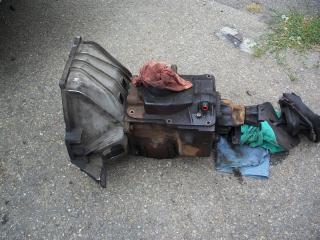

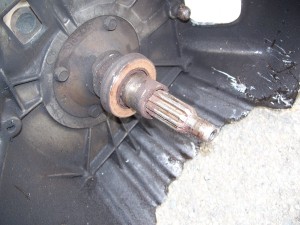
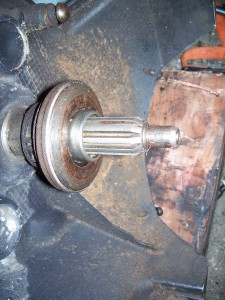
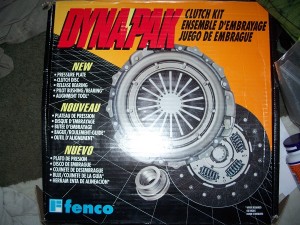

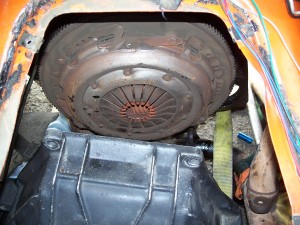
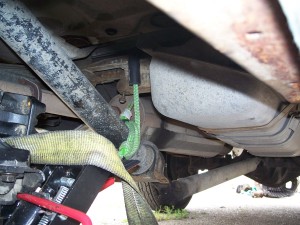
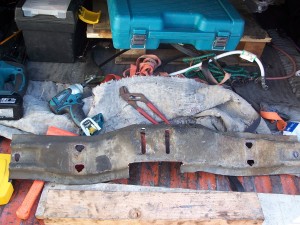
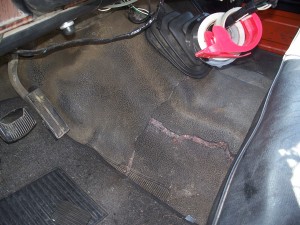
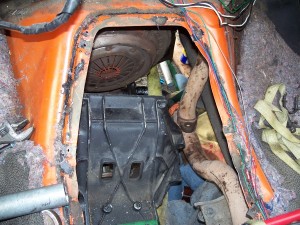
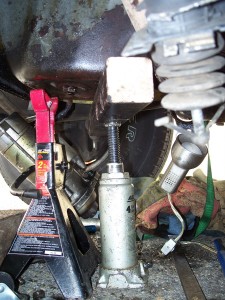
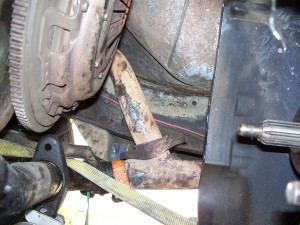



Comments on this entry are closed.